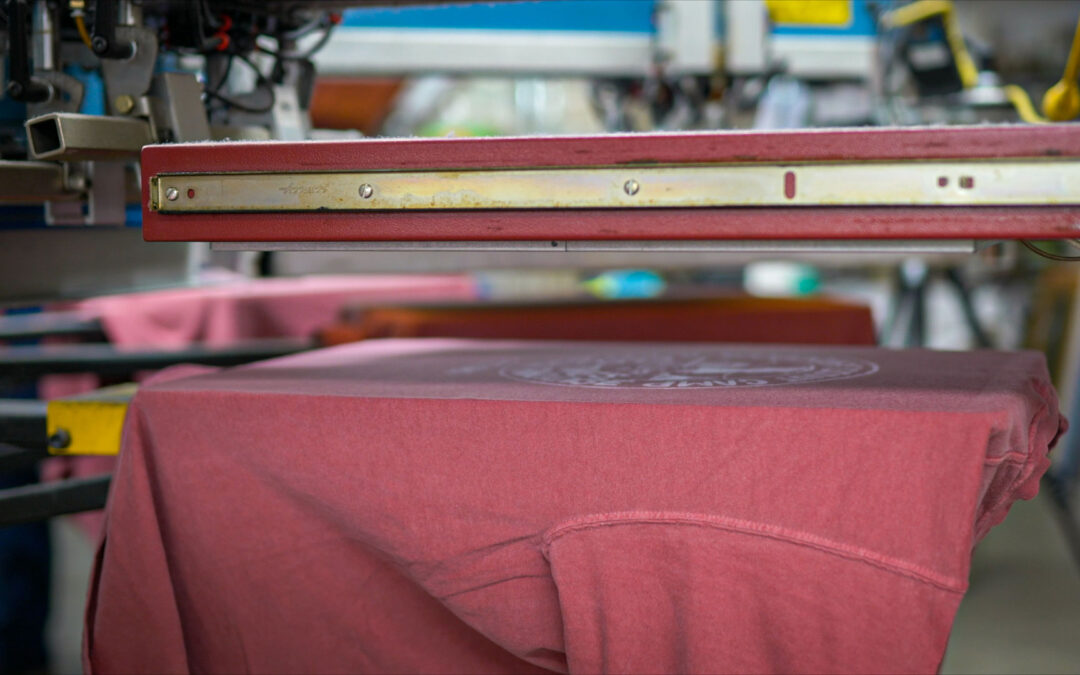In the world of custom apparel and promotional items, two popular methods stand out for applying designs onto various surfaces: screen printing and heat press. Both techniques offer distinct advantages and unique outcomes, making them essential considerations for anyone looking to create personalized products. In this article, we’ll dive into the differences and similarities between screen printing and heat press, highlighting how Coosa Creek Marketing Products excels in offering both of these techniques to meet diverse needs.
Screen Printing: Classic Craftsmanship
Screen printing, also known as silk screening, is a time-honored method of transferring ink onto a substrate using a mesh screen. This technique involves creating a stencil of the desired design on the screen, which is then placed over the material to be printed. Ink is applied to the screen and pushed through the openings onto the surface, creating a crisp and vibrant design. Here are some key features of screen printing:
Advantages:
- Durability: Screen printing results in vibrant and long-lasting designs that withstand repeated washings and exposure to various elements.
- Color Richness: This method offers the ability to achieve vibrant, opaque colors that stand out on both light and dark fabrics.
- Cost-Effective for Bulk: Screen printing becomes more cost-effective for large quantities, making it a go-to choice for producing a significant number of items.
Disadvantages:
- Setup Complexity: Creating screens for each color in a design can be time-consuming, making it less suitable for small runs or intricate designs.
- Limited Detail: Extremely fine details might not translate well onto the screen, leading to potential loss of intricacy in the final print.
Heat Press: Modern Versatility
Heat press, on the other hand, is a more contemporary method that utilizes heat and pressure to transfer designs onto various substrates. In this process, a design is printed onto a special transfer paper using inkjet or laser printers. The transfer paper is then placed onto the material to be printed, and a heat press machine applies high temperature and pressure, causing the ink to transfer onto the substrate. Here’s a closer look at heat press:
Advantages:
- Detail Reproduction: Heat press excels at reproducing intricate details and gradients, making it suitable for complex designs and photographs.
- Quick Turnaround: Unlike screen printing, heat press does not require the creation of screens, resulting in quicker setup and production times.
- Small Batches: Heat press is cost-effective even for small quantities, making it a great choice for limited runs and one-off items.
Disadvantages:
- Durability: While durable, heat press designs may not be as resilient as screen printing, particularly over multiple washes.
- Color Limitations: Achieving truly vibrant colors, especially on dark fabrics, can sometimes be challenging with heat press.
Coosa Creek: The Best of Both Worlds
Coosa Creek stands out in the market by offering both screen printing and heat press techniques, catering to a wide range of customer preferences and project requirements. By providing these two distinct methods, we ensure that customers have the freedom to choose the technique that best suits their design, quantity, and quality needs.Whether you’re looking for the timeless appeal of screen printing or the modern versatility of heat press, Coosa Creek’s offerings provide a comprehensive solution for all your custom apparel and promotional item needs. The flexibility to choose between these techniques allows you to strike the perfect balance between design intricacy, color vibrancy, durability, and budget considerations.
In conclusion, both screen printing and heat press have their own strengths and weaknesses, making them valuable tools in the realm of custom design and personalization. Thanks to Coosa Creek’s commitment to offering both techniques, you can confidently embark on your creative journey, knowing that you have the expertise and resources at hand to bring your vision to life!


